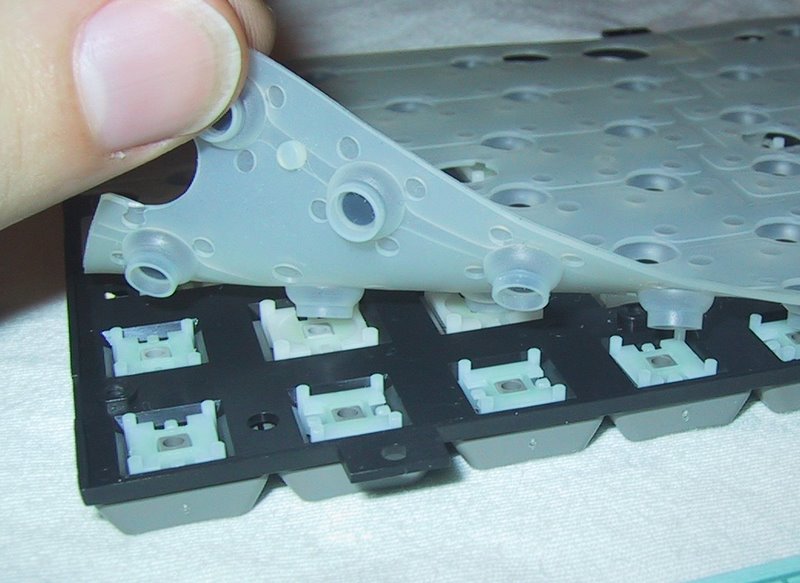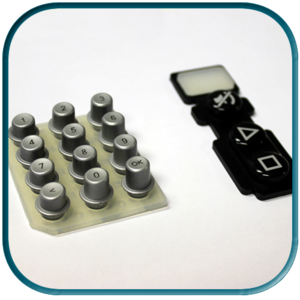Learn Exactly How Membrane Switches Are Customized to Satisfy Certain Layout Needs
Learn Exactly How Membrane Switches Are Customized to Satisfy Certain Layout Needs
Blog Article
The Ultimate Source on Membrane Layer Switches: Layout, Performance, and Applications
Membrane switches offer as an appealing crossway of design and functionality, playing an essential duty in contemporary customer interfaces throughout various industries. As we check out the varied applications of membrane switches, it comes to be evident that their versatility and resilience are important in atmospheres ranging from medical care to customer electronics.

Comprehending Membrane Layer Switches
Membrane switches are a type of interface technology commonly made use of in different electronic gadgets, identified by their thin, flexible layout and capability. These switches contain numerous layers that include graphic overlays, adhesive layers, and circuitry, allowing a reliable and portable user interface for users. They can be found in appliances, medical devices, and industrial control board, providing a reliable approach for user communication.
Among the key advantages of membrane layer switches is their capability to resist contaminants such as dirt and dampness, making them ideal for settings where longevity is important. Their low-profile design enables for seamless assimilation into different applications, while the adjustable graphic overlays boost individual experience by offering clear visual feedback. In addition, membrane layer switches can suit a variety of modern technologies, such as responsive comments and backlighting, further improving their functionality.
The production procedure for membrane switches over normally involves display die-cutting, printing, and lamination strategies, guaranteeing accuracy and consistency in production. Overall, membrane changes stand for a effective and versatile solution for modern-day electronic gadgets, combining functionality with aesthetic charm in individual interface design.
Key Parts and Layout Elements
A selection of key components and design aspects come with each other to produce an effective membrane button. At the core, the graphic overlay serves both useful and aesthetic functions, providing a straightforward user interface while shielding internal components from ecological aspects. The selection of products, commonly polyester or polycarbonate, affects toughness and tactile feedback.
Below the overlay, the glue layer makes sure the button sticks safely to the substratum, which can be plastic, metal, or glass. The spacer layer is critical, as it maintains the needed void in between the overlay and the circuit layers, permitting efficient actuation. Membrane Switches. Circuit traces, normally made from conductive ink or adhesive, are printed on a flexible substratum, allowing electrical signals to be transmitted when stress is used
Design considerations additionally include the setup of tactile domes or embossing that give physical feedback to the individual, boosting the general experience. In addition, the design and spacing of the switches must be enhanced for simplicity of usage, ensuring that individuals can browse the interface intuitively. Overall, these elements and design aspects work synergistically to create a trustworthy, practical membrane button customized to details applications.
Capability and Procedure Mechanism
At the heart of efficient functionality for membrane switches over lies their functional system, which facilitates user communication via a straightforward yet effective design. These buttons operate the principle of stress activation, where a user applies pressure to a marked location of the switch (Membrane Switches). This activity presses the layers of the button, finishing an electrical circuit that sends a signal to the linked tool
The construction usually consists of a top visuals layer, a sticky spacer layer, and a bottom circuit layer, which jointly form a durable user interface. When pressure is used, the leading layer collapses versus the lower circuit layer, allowing conductive traces to attach. This design not only makes it possible for clear responsive feedback however likewise guarantees sturdiness and integrity, as the buttons are often resistant to dirt and dampness.
Moreover, the versatility of membrane layer changes permits for assimilation with different innovations, consisting of LED indications and microcontrollers, enhancing their performance. By offering a streamlined read this user interface that decreases mechanical wear, membrane switches continue to be a preferred choice in news applications ranging from consumer electronics to commercial devices, ensuring ideal performance and user contentment across varied atmospheres.
Sorts Of Membrane Buttons

An additional significant classification is brightened membrane switches, which integrate backlighting to enhance exposure in low-light conditions. These buttons are typically made use of in control panels and dashboards where clear exposure is essential.
In addition, there are customized membrane switches over created to fulfill particular dimensional, visual, and practical demands. These personalizations can consist of special shapes, shades, and layouts, permitting smooth integration right into various tools.

Applications Across Different Industries
How do membrane switches boost functionality throughout diverse markets? In the medical field, membrane switches play an important function in gadgets such as diagnostic devices and client surveillance systems, where reliability and convenience of cleaning are extremely important.
In the vehicle sector, membrane layer buttons are frequently utilized in control panels and control board, giving user-friendly controls that improve chauffeur safety and security and convenience. The consumer electronics industry likewise takes advantage of their adjustable and light-weight attributes, enabling streamlined styles for mobile phones and page home devices.
Moreover, membrane layer buttons find applications in commercial automation, where they add to reliable equipment operation and surveillance systems. Their resistance to dirt and moisture guarantees capability sought after problems (Membrane Switches). Furthermore, the food and beverage market employs membrane layer switches for tools control, where hygiene and sturdiness are crucial
Final Thought
In verdict, membrane changes stand for an essential development in individual interface modern technology, identified by their special style and performance. The flexibility of membrane switches over promotes their application throughout diverse sectors, from clinical tools to consumer electronic devices.
Membrane changes serve as an intriguing intersection of layout and capability, playing a critical duty in contemporary individual interfaces across various markets.Membrane buttons are a kind of customer interface modern technology extensively utilized in different digital tools, defined by their thin, flexible style and functionality.At the heart of efficient functionality for membrane switches lies their functional mechanism, which facilitates individual communication with a straightforward yet reliable layout. These buttons operate on the concept of pressure activation, where a customer applies force to a designated location of the button.In final thought, membrane layer changes stand for a critical technology in customer interface technology, defined by their special style and functionality.
Report this page